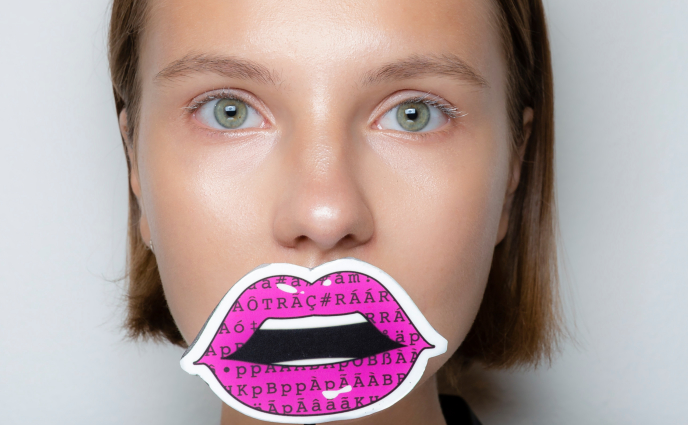Always opt for a medium-warm, short shower and use pH-balanced, mild cleansers. This gives your dry, cracked skin a chance to recover. Dr. Sandy Skotnicki, board certified dermatologist and author of Beyond Soap, adds that you should clean sparingly. "Cleansing oils are also helpful as they put back some of what is removed with cleansing."
Image via Imaxtree
Here's your permission slip to layer on thick, occlusive emollients as many times throughout the day as you'd like and can tolerate. "Emollients work especially well in combination with humectants because they sit on the surface of the skin to lock in moisture and prevent evaporative loss of water from the skin," says Maiman. "In other words, it helps keep in what humectants draw from the lower skin layers."
Examples include natural butters and oils, petroleum jelly, allantoin and mineral oil.
Image via Imaxtree
Oil-based products can work wonders, but don't forget to use humectants as well. "These ingredients draw water from the lower layers of the skin to the more superficial layers, effectively hydrating them," explains Maiman. "These include, but are not limited to, glycerin, dimethicone, urea, hyaluronic acid and pantothenol."
Image via Imaxtree
This rule applies to both washing your face and showering. This hack essentially helps lock in moisture from your cleansing sesh. "Do not rub skin dry, but rather pat it dry so there is still a bit of moisture on the skin. That is the best time to apply moisturizers," notes Maiman.
Image via Imaxtree
In addition to moisturizing and hydrating with emollients and humectants, try to get moisture into the air. This is especially helpful during the winter when we're contending with drier air and indoor heating. "Turn it on in the evening to boost humidity in the air," advises Tami Blake, licensed esthetician and founder of Free + True. Keep it on while you sleep as well.
Image via Imaxtree









